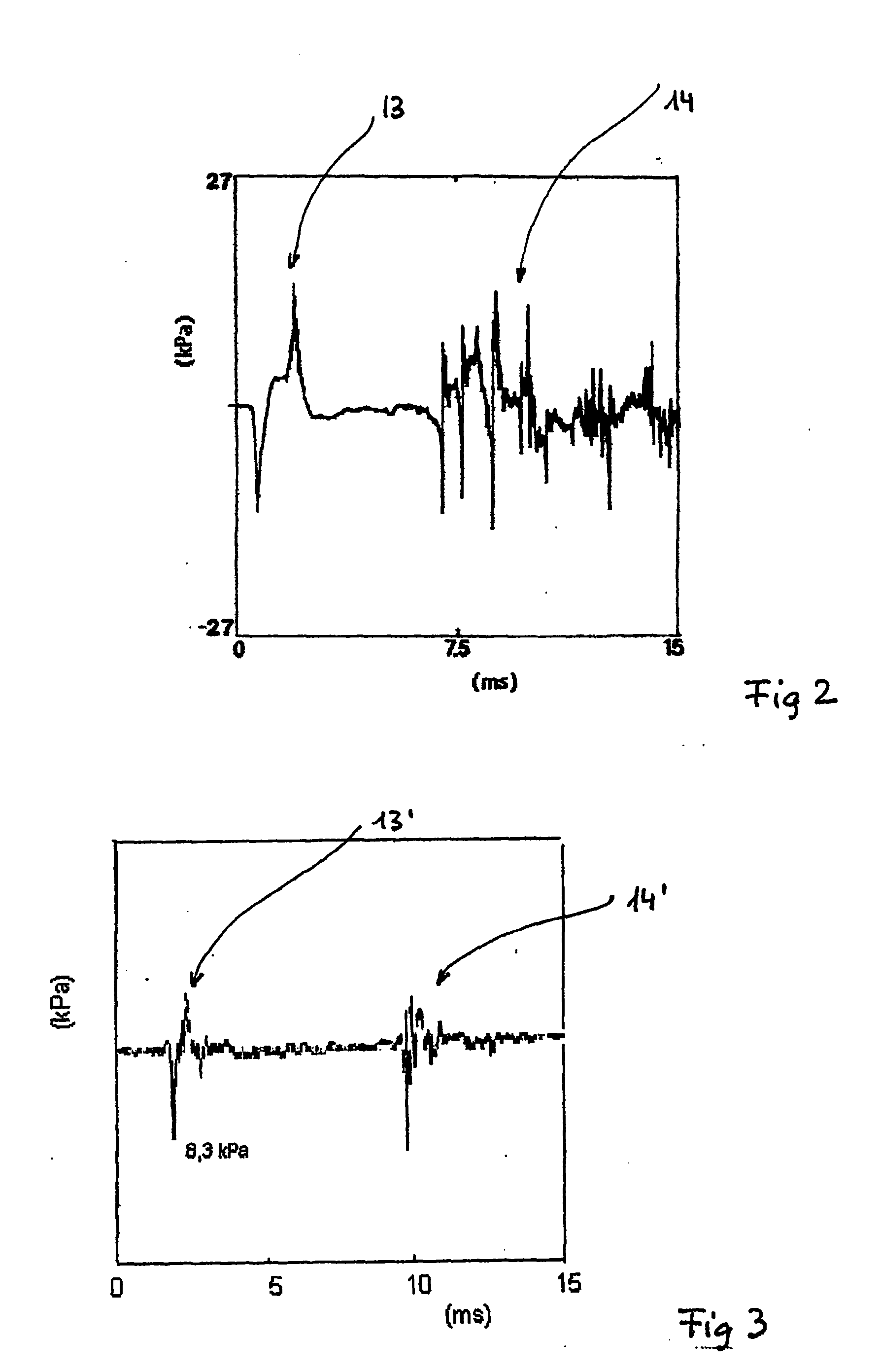High-resolution and high-power ultrasound method and device, for submarine exploration
a high-power, ultrasound technology, applied in the direction of measuring devices, instruments, scientific instruments, etc., can solve the problems of insufficient fulfilment of all traditional acoustic systems, complicated understanding of the behavior of acoustic waves propagating through sediments, and high-resolution acoustic devices
- Summary
- Abstract
- Description
- Claims
- Application Information
AI Technical Summary
Benefits of technology
Problems solved by technology
Method used
Image
Examples
Embodiment Construction
[0028] Before going into the details of the research performed by the inventor, we briefly describe, referring to FIG. 1, the apparatus or device of the present invention. This apparatus includes a parabolic transmitter 1, forming the acoustic source, which is associated to an electronic control unit 2. The transmitter 1 is spaced apart from the receiver 3 by an appropriate distance, which is adjustable according to the prospecting depth. The paraboloidal transmitter 1 is energised by means of a condenser bank (condenser array), not shown in the figures, forming part of the control unit 2. The condenser bank supplies electrostatic energy to the transmitter 1, and the latter converts it into acoustic energy with the aid of the same electronic control unit 2. The receiver, or reception paraboloid 3, is connected to an analog-to-digital converter (ADC) 4 that receives a trigger signal—in the form of an electric signal—from the control unit 2, and transmits the digital data to a micropr...
PUM
 Login to View More
Login to View More Abstract
Description
Claims
Application Information
 Login to View More
Login to View More - R&D
- Intellectual Property
- Life Sciences
- Materials
- Tech Scout
- Unparalleled Data Quality
- Higher Quality Content
- 60% Fewer Hallucinations
Browse by: Latest US Patents, China's latest patents, Technical Efficacy Thesaurus, Application Domain, Technology Topic, Popular Technical Reports.
© 2025 PatSnap. All rights reserved.Legal|Privacy policy|Modern Slavery Act Transparency Statement|Sitemap|About US| Contact US: help@patsnap.com



